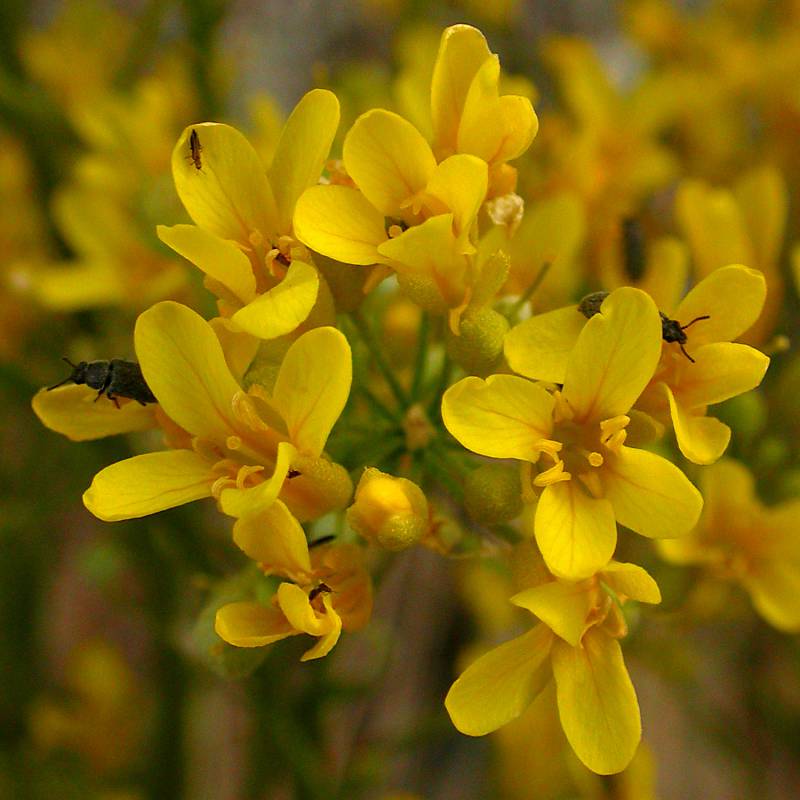Physaria ovalifolia
Physaria douglasii
Columbia bladderpod, Douglas' bladderpod
Basal leaves 3-12 cm. long, the blade oblanceolate to obovate, entire to remotely toothed, 2-15 mm. broad, tapered to a petiole at least as long;
cauline leaves alternate, numerous, linear to linear-oblanceolate.
Inflorescence racemose; pedicles slender, 6-17 mm. long, erect and nearly straight to S-shaped or recurved;
sepals 4, the outer pair somewhat saccate at the base;
petals 4, yellow to yellowish-orange, 6-9 mm. long;
stamens 6, the filaments slender;
style about equaling the silicle.
Silicles inflated, nearly globose or a little broader above the center, 3-4 mm. long and broad;
seeds in 2 series, not winged.
Physaria ovalifolia
Physaria douglasii
Occurring east of the Cascades crest in Washington; British Columbia to northern Oregon, east to northwestern Montana.
- Local floras:
OR,
WA
- Local Web sites:
Flora NW,
PNW Herbaria
WildflowerSearch
iNaturalist (observations)
- LBJ Wildflower Center
- SEINet
- Plants of the World Online
- Encyclopedia of Life
- Wikipedia
- Google Image Search


